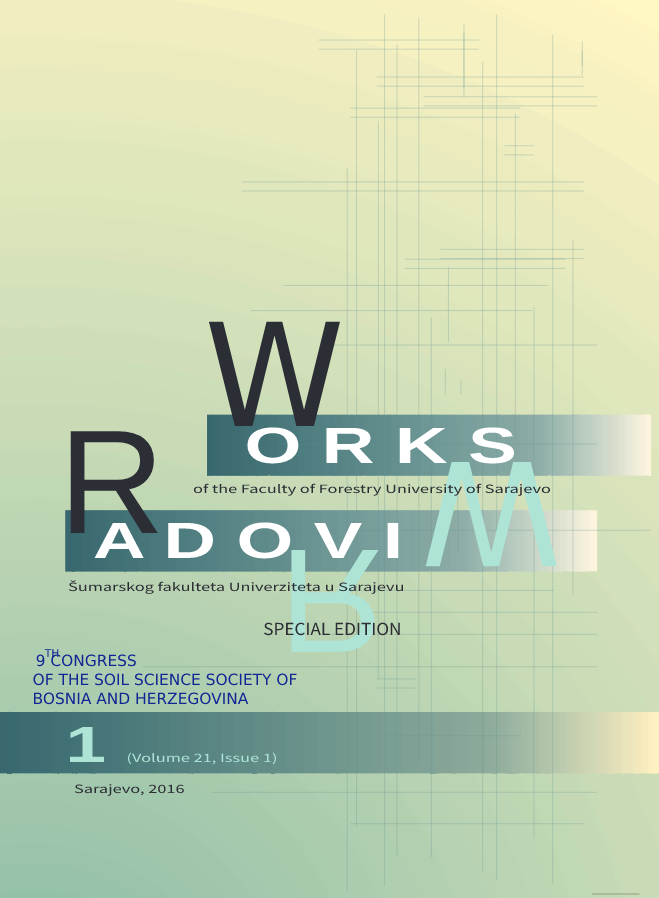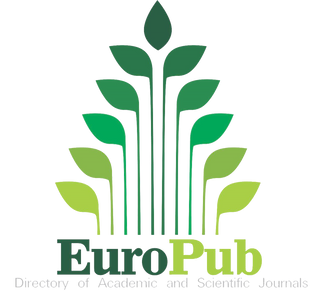RELATIONS BETWEEN SOIL CHEMICAL PROPERTIES AND CADMIUM CONTENT IN GREEN MASS OF SILAGE MAIZE
DOI:
https://doi.org/10.54652/rsf.2016.v1.i1.301Ključne riječi:
cadmium, soil chemical.properties, silage maize, MLRSažetak
UDK 631.41:633.15; 633.15:546.48 (497.6)
Cadmium content in soil is an important factor which determines the content of this heavy metal in plants. However, many other factors including soil pH, content of organic matter, other trace minerals in soil which could reduce or enhance cadmium uptake by roots of plants as well as anthropogenic routes of cadmium contamination (mining, superphosphates and industry) can have an influence on the cadmium concentrations in plant tissue. A three years study was conducted to evaluate cadmium content in green mass of silage maize in certain areas of Central Bosnia region. A multiple linear regression (MLR) model was developed to predict maize tissues cadmium concentration as function of different factors such as soil cadmium content, pH of soil, organic matter in soil as well as phosphorus, potassium, zinc and iron content in soil. The results indicate huge variability of cadmium content in soil (maximum value was more than 3fold greater than the minimum value) and green mass of maize (maximum to minimum ratio greater than 100). Cadmium concentration in all investigated samples of maize was below maximum tolerable levels in ruminant nutrition. Using a stepwise multiple linear regression method, a significant model emerged (F2.14 = 55.193, p<0.001; R2 = 0.887). Significant variables were phosphorus (Beta = 0.813, p<0.001) and potassium (Beta = -0.401, p<0.005) content in soil. Soil pH, organic matter, cadmium, zinc and iron were not significant in this model. Insignificant correlation between soil and plant cadmium content (r=0.374, p=0.07) indicates that the presence of cadmium in the soil may not be the main determinant of its content in plants.
Downloads
References
Andersson, A. and G. Siman. 1991. Levels of Cd and some other trace elements in soils and crops as influenced by lime and fertilizer level. Acta Agriculture Scandinavica, 41:3-11.
Ciećko, Z., S. Kalembasa, M. Wyszkowski and E. Rolka. 2004. Effect of soil contamination by cadmium on potassium uptake by plants. Polish Journal of Environmental Studies, 13-3, 333-337.
Egner, H., H. Riehm, W.R. Domingo. 1960. Untersuchungen uber die chemische Bodenanalyseals Grundlage fur die Beurteilung de Nahrstoffzustandes der Boden. II. K. LantbrHogsk. Ann., 26: 199-215.
EU 2007. European Union risk assessment report. Cadmium metal. Part I Environment. Statistics by the European Commission.
Jeng, A.S. and B.R. Singh. 1995. Cadmium status of soils and plants from a long-term fertility experiment in southeast Norway. Plant and Soil, 175: 67-74.
Lehoczky, E. and Z. Kiss. 2006. Study of the transfer coefficient of cadmium and lead in ryegrass and lettuce. Communications in Soil Science and Plant Analysis, 37: 2531-2539.
McLaughlin, M.J., K.G. Tiller, R. Naidu, D.P. Stevens. 1996. The behavior and environmental impact of contaminants in fertilizers. Australian Journal of Soil Research, 34: 1-54.
Mineev, V.G., V.G. Sićev, O.A. Ameljačkin. 2001. Praktikum po Agrohimi. Izd. Moskov. Uni, 215-217.
NRC - Committee on Minerals and Toxic Substances in Diets and Water for Animals. 2005.
Cadmium. In: Mineral tolerance of animals. 2nd revised edition, pp 79-97.
Nziguheba, G., E. Smolders. 2008. Inputs of trace elements in agricultural soils via phosphate fertilizers in European countries. Science of the Total Environment, 390: 53-57
Ramachandran, V. and T. J. D’Souza. 1998. Plant Uptake of Cadmium, Zinc, and Manganese in Soils Amended with Sewage Sludge and City Compost. Bulletin of Environmental Contamination and Toxicology, 61-3, pp 347-354.
Sauvé S., W. Hendershot and H.E. Allen. 2000. Solid-solution partitioning of metals in contaminated soils: dependence on pH, total metal burden, and organic matter. Environmental Science & Technology 34 (7), 1125-1131.
Singh, B. R. 1994. Trace element availability to plants in agricultural soils, with special emphasis on fertilizer inputs. Environ. Rev. 2:133–146.























